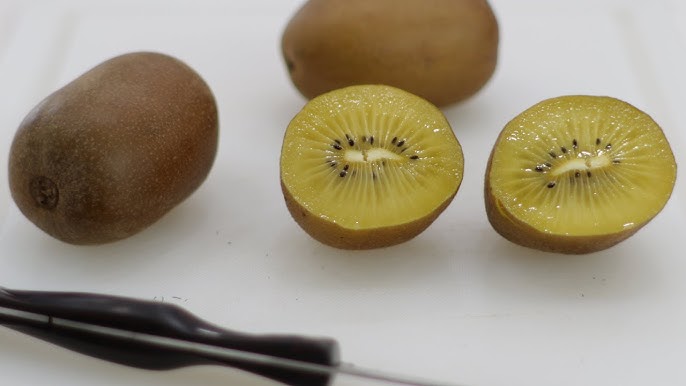Discovering the Distinct Attributes and Interesting Biology of Kiwi: A Comprehensive Research
Welcome to the remarkable world of kiwi! Prepare to be surprised as we uncover how kiwis have actually adapted to their flightless existence and discover their eco-friendly significance.
Physical Qualities
What are the physical features of a kiwi bird? The kiwi bird is a tiny, flightless bird indigenous to New Zealand. One of the most distinctive attributes of the kiwi bird is its lengthy, slender costs.
The kiwi bird has an one-of-a-kind tuft, with soft, hair-like plumes that appear like hair. Unlike a lot of birds, the kiwi has little wings that are concealed under its plumes and are not useful for flying.
Another intriguing physical attribute of the kiwi bird is its nostrils found at the pointer of its costs. This adaptation permits them to ferret out bugs and worms, their main source of food, in the leaf trash on the forest floor (what do kiwis taste like). Furthermore, the kiwi bird has huge, rounded eyes that are adjusted for low-light problems, as they are primarily nocturnal
Feeding Routines
To comprehend the feeding practices of the kiwi bird, you need to observe its foraging actions and nutritional preferences. Kiwis are special in their feeding routines, as they are primarily nocturnal and count greatly on their sense of odor to locate food. They have a long, slim bill that enables them to penetrate the ground searching for pests, worms, and various other invertebrates. These birds utilize their strong feeling of smell to find victim concealed beneath the surface area, and then use their bill to remove it.
Kiwis are omnivorous, indicating they consume both plant and animal matter. Along with pests, kiwis likewise eat fruits, seeds, and berries. They have a certain fondness for fallen fruits that are abundant in sugars, such as the berries of the shrubby tororaro plant. Kiwis have been observed feeding on a wide array of plant types, indicating their adaptability to various food sources.
Interestingly, kiwis do not have a crop, which is a customized component of the digestive system discovered in numerous birds. Rather, their food passes directly from the esophagus to the belly. This may be an outcome of their distinct evolutionary history and environmental specific niche.
Recreation and Breeding
Now let's delve into the remarkable world of kiwi recreation and reproduction, structure upon our previous expedition of their distinct feeding routines. They are monogamous birds, meaning they create lasting pairs.
During this time, the female kiwi will lay one to 2 eggs, which are abnormally large compared to the bird's body dimension. Kiwi eggs are the largest of any bird in proportion to body weight.
Once the chicks hatch, they are birthed fully feathery and able to see (what do kiwis taste like). They are additionally quite precocious, indicating they are able to take care of themselves fairly quickly. Nonetheless, even after the chicks have actually hatched out, the parents proceed to give treatment and defense for them till they are totally independent, which can take numerous months.

Adjustments to Flightless Presence
During their transformative history, kiwis have actually developed remarkable adaptations for their flightless existence. As a flightless bird, the kiwi has actually undergone numerous modifications to its makeup and actions that enable it to flourish in its distinct environment. Among one of the most recognizable adjustments is its wing framework. Unlike various other birds, kiwis have small, vestigial wings that are basically ineffective for flying. Instead, these wings have actually evolved into powerful appendages that help in equilibrium and security, making it possible for the kiwi to browse its woodland flooring environment effortlessly.
One more adaptation that kiwis have created is their solid legs and feet. The kiwi's legs are like this muscular and located far back on its body, offering it with a reduced facility of gravity and optimum balance.
In order to survive without the capacity to fly, kiwis have additionally created a keen feeling of smell. Their lengthy, slim beaks house extremely sensitive nostrils, enabling them to find bugs and worms underneath the forest flooring. This impressive adaptation aids kiwis situate food resources and preserve a balanced diet regimen.
Ecological Relevance
The environmental relevance of kiwi exists in their role as essential seed dispersers in their native habitat. As they move via the woodland floor, kiwi forage for pests, worms, and a selection of plants.
The kiwi's capability to disperse seeds is important for maintaining the biodiversity and equilibrium of their environment. By spreading seeds across different areas, they add to the growth and wealth of numerous plant types. Subsequently, these plants offer food and shelter for other pets, producing an internet of interdependencies within the community.
Additionally, kiwi play an essential role in managing the population of particular plant types (what do kiwis taste like). Some plants produce an extreme number of seeds, which can bring about overcrowding and minimal sources for other plants. By eating and dispersing these seeds, kiwi aid manage the development of such plants, making sure a healthier and extra diverse ecological community
The environmental importance of kiwi extends beyond their duty as seed dispersers. Their burrowing habits also adds to soil oygenation and nutrient recycling, boosting the total wellness of the woodland flooring. In addition, their feeding practices can help manage insect populaces, lowering the danger of parasite outbreaks that you can look here can harm greenery.
Conclusion
Finally, checking out the one-of-a-kind attributes and interesting biology of kiwi exposes its physical qualities, feeding habits, recreation and breeding patterns, along with its adaptations to a flightless existence. With its distinct attributes and environmental importance, the kiwi works as an exceptional instance of nature's variety and adjustment. By appreciating the kiwi and recognizing's role in its environment, we can further advertise preservation efforts to make certain the conservation of this amazing varieties for future generations.
